It started out when I was a youngster in Montana where my father pastored a small church in Conrad in the northwestern corner of the state. The other kids wanted to be…well, whatever kids want to be in rural Montana: Farmers, postmen, bankers. But little Bobby – me – wanted to be a fireman, because it clearly was the most exciting thing a person could do, so far as I knew from my extensive three and a half years experience in the big world.
When a missionary working as a doctor in pre-Red China came to our church, I discovered something more exciting than putting out fires: I decided to become a medical missionary in China.
This lasted through my early teens. At the time, the idea of going into Space seemed impossibly remote, but the idea of studying about Space and the Universe seemed to me even more exciting than being a medical missionary in China, and so I shifted my focus again.
And then two things happened. The International Geophysical Year was launched, where, among other things, the United States mounted a Trans Antarctic Expedition and set into motion plans for a permanent presence at the South Pole, and, in October, 1957, the Russians launched Sputnik.
Suddenly just studying about Space was not nearly so exciting as actually going there. It was a long stretch from my boyhood dreams of becoming a fireman, but I was driven by the same underlying urge – high adventure.
I tested with the Naval flight program, and essentially aced all their exams and work-ups – except one small portion of the eye exam. Bottom line: I could not become a jet fighter pilot; ergo sum, no Gemini or Apollo in my future. My brush with Naval Aviation, however, opened a new door to adventure, one that I had touched back in 1950. I had found myself in the ancient English city of Bath exploring a regional exposition set up on a commons green. The British Submarine Service had set up a periscope and recruiting station, where I spent several happy hours playing with the scope and being regaled by a crusty British submariner.
Outer Space was out, but Inner Space opened its doors, and I spent several exciting years as an enlisted submariner.
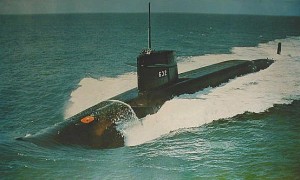
USS John Marshall (SSBN 611) and USS Von Steuben (SSBN 632)
Then I got lucky, was selected for a scholarship program, and attended University of Washington at the Navy’s expense. While there I joined a ship-born expedition into the high Arctic.
And it happened again! I suddenly remembered my excitement back in 1957 as I read about the intrepid adventurers crossing frozen Antarctica and establishing a permanent post at the bottom of the world. My mother had written me expressing her disappointment that I had turned away from my childhood religious beliefs, and I wrote back, encouraging her to see her son standing one day at the bottom of the world.
I completed college, was commissioned an officer, and went back into submarines for several more years. But the tug of the Earth’s frozen wastelands formed a backdrop for all my activities: Vietnam (adventure), deep sea diving (more adventure), very deep, long duration saturation dives conducting esoteric underwater espionage (high adventure), and finally transferring my commission to the NOAA Corps, and finding myself actually in the high Arctic for three years of spine tingling adventure in the frozen north.
In the Bering Sea Ice Pack – NOAA Ship Surveyor (R-101)
And then the opportunity of a lifetime presented itself, and – for me – it was a no-brainer. I accepted the assignment, and in the Summer of 1981, found myself underway for Antarctica and the South Pole, where I would remain for the next thirteen months. In mid December, 1981, I disembarked at the bottom of the world from a ski-equipped Hercules C-130, and took my first breath of the icy thin air on that ten-thousand foot plateau.
Amundsen-Scot South Pole Station
It was so cold that I feared I had frozen the tops of my lungs. After just a few steps I was panting and out of breath. My face and lips felt seared, and I quickly understood the reason for the standard hood with a deep, fur-lined tunnel protecting the face – preventing skin, eyes, and mucus membranes from nearly instant freezing in the frigid air.
The “Protective“ fur-lined hood.
As I surveyed my new home, I recalled my letter to my Mom so long ago. This was adventure, I thought, this was high adventure, extreme adventure.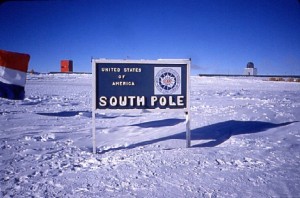
Amundsen-Scott South Pole Station – The Pole
In an ironic twist, although my primary task was to monitor the National Science Foundation atmospheric experiments at the Pole, I was assigned the additional task of Station Fire Marshall.
I had come full circle.
Most people don’t understand how dry Antarctica really is. The atmosphere is so dry, in fact, that nearly everything exposed to outside air eventually dries up, and if it is inherently flammable, it becomes even more so in this brittle condition. Consequently, we took fire very seriously down there.
During the first three months there was a moderately large crowd at the Pole, reaching 65 at one point. We drilled for various emergencies, but most importantly for fire. We actually had a small fire in the roof of the power plant that we were able to extinguish without much difficulty.
As Summer came to an end, the population dwindled until only eighteen of us remained to watch the last C-130 depart, leaving us in total isolation for the next nine months.
This Hercules C-130 was the last plane to leave
marking nine months of total isolation
Whatever I had experienced before, I thought, THIS was really high adventure, in CAPS, primed. With hindsight, it’s probably good that I didn’t know what lay ahead.

Amundsen-Scott South Pole Station
Winter-over Crew 1981 – 1982
Months passed as our activities became simple routine. We practiced our firefighting skills under every conceivable scenario – except inside the corrugated steel arch that contained our Goodyear fuel bladders. The reason was simple: In our tests, we had been unable to ignite the DFA (diesel fuel arctic) that was doped to stay liquid down to eighty below. As Fire Marshall, however, I began to feel guilty, and eventually I approached the Station Manager with a proposal to drill at least once in the Fuel Arch.
We set it up, and a week later spent an entire day running through the plan and practicing the actual procedures we might need in case of fire in our fuel supply. We even blanked out our Scott Air Pack face masks to simulate not being able to see in the inevitable thick black smoke. It was fun, and we all felt better for the drill. During the drill we had discovered that the Scot Air Packs did not function very well at 80 and 90 below zero. The regulators froze up, but we were able to get a few minutes of additional air time by storing the air bottles inside, and bringing them out just before using them.
One week later I was sitting in my lab located a couple hundred yards upwind from the main Pole Complex. It was about noon – and suddenly the fire alarm sounded. Shortly after, the Station Manager announced over the speaker system that this wasn’t a drill, and that the source of the alarm was the complex that contained our small sickbay and the fuel bladders.
The Clean Air Lab – Located about 100 yards upwind of the end of the Fuel Arch
and about 200 yards from the Dome main entrance
I hustled to don my outer clothing, since rushing to the main station without it would risk almost certain death. The end of the fuel arch was about a hundred yards from my lab door.
Amundsen-Scott South Pole Station as seen from my lab. The nearly drifted over Fuel Arch
is the closest part of the complex. The door is clearly visible in the middle at the top of the end
of the Arch. The main entrance is in front of the Arch, halfway along the Arch, just this side
of the small white tower with the black top.
I ran the entire distance, and arrived at the door at the top of the arch well winded from my exertion at the Pole’s extreme altitude. I turned the door knob, and the door blew open from internal pressure, knocking me on my back. Black smoke billowed from the open door.
I got up, forced the door shut, and hurried along the outside of the arch to the main entrance – another hundred yards. Clearly, I had a major problem.
As I made my way to the entrance, I pondered our situation. Obviously, a fuel bladder was on fire. We were totally isolated, some 900 miles from the nearest help, even if it could actually arrive – which was doubtful, and I had no idea how to solve the problem. Sure we had drilled a week earlier, but this was the real thing. It wasn’t a game, and it wasn’t funny.
As an added safety measure, earlier in the year we had constructed a double barrier with snow blocks between the entrance to the fuel arch and the rest of the station. When I arrived, gasping from my exertions, the station personnel were assembled at the barrier, awaiting my directions.
We had to extinguish the fire, for without fuel, we had no heat, no electricity, no water – without the fuel we were dead!
I donned a fresh, warm Scot Air Pack, and then gingerly opened the door after ensuring that everyone else was safely behind the snow barrier. Greasy black smoke roiled out. Four of us cautiously entered the pitch black, smoke filled arch – unable to see our hands in front of our faces. It was hot, even though the outside temperature was minus 80 degrees. And the noise was deafening. All we could see once we got to the site of the fire, were red flames through the thick smoke.
We attempted to reel the dry chemical PPK or “Purple K” extinguisher hose from the back wall toward the fire, but the hose shattered into thousands of pieces. It was never designed to withstand such cold. As a backup we each carried a portable PPK extinguisher, and together we played our purple streams ahead of us as we approached the blazing inferno.
The cold was on our side, and the combination of chemical and cold helped to beat down the flames, but we couldn’t extinguish them. The blazing bladder was covered with a three foot thick insulating layer of fiberglass. This material was soaked with DFA, and as soon as we removed the Purple K, the flames came right back with a vengeance.
We had to do something fast!
Larry Antonuk, the electrician, figured that the electrical heat blanket under the insulation must have been shorted, and was feeding the fire with continuous sparks. We didn’t have time to go to the power panel at the other side of the station to throw the breaker – we had to solve the problem right then, or we weren’t going to solve it at all.
Heroically, Larry told us to beat down the flames, and as we did so, he slogged across the burning bladder through the thick smoke to the local connection on the far side, and literally pulled the plug on the fire. His shoes filled with DFA at about minus 80 degrees, so he was in immediate great personal peril.
Aftermath – Note the liquid DFA and the piles of DFA-soaked insulation
Aftermath – As seen from the “other side“ where Larry unplugged the heat blanket
Aftermath – Looking down the Arch, past a melted “snow tower“ that had formed over the
winter from fine snow/ice particles (called spindrift) seeping through a tiny hole in the Arch.
Fortunately, Larry’s idea worked, and this time the fire stayed out. We rushed him to sickbay where the Doctor commenced immediate treatment of his frostbitten feet.
Later, we took stock of our situation. Half our remaining fuel was gone, but if we were careful, we could last until new fuel could be flown in – about two months out. Most of our “Purple K” was gone, but we still had some CO2 extinguishers. We determined that the bi-metallic circuit breaker that should have opened the circuit to the heat blanket had crystallized in the cold. It was completely non-functional, like the Purple K hoses.
Then we got to thinking. What if we had not drilled, what if we had not practiced with blanked out masks, or what if the fire had happened in the middle of the night? It certainly would have taken us a lot longer to get our act together. Thus we would have arrived at the snow barrier perhaps fifteen or twenty minutes later that we actually did. By this time, most of the oxygen in the arch would certainly have been consumed, and the arch would have been filled with super hot explosive gas.
When we opened the door to enter the arch, the fresh oxygen most likely would have caused a gigantic explosion, funneled by the arch straight at the entire station crew, except for the female cook who was pregnant and away from the immediate vicinity, and the 18 year old radio operator who was keeping McMurdo and the rest of the world appraised of our situation.
I don’t believe they could have survived by themselves.
As it turned out, because of a bit of planning and a lot of luck, they didn’t have to, Larry’s feet healed nicely, and the rest of us earned the right to tell a dandy tale of high adventure.
Amundsen-Scott South Pole Station in twilight – a three-month affair
[Check out the South Pole Slide show for pictures from the entire year]




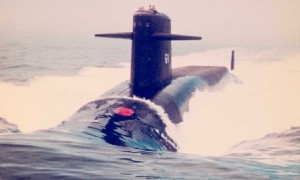
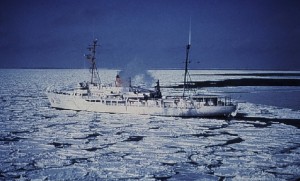
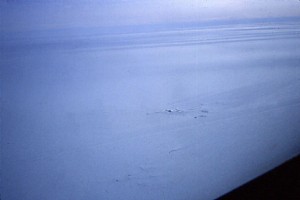
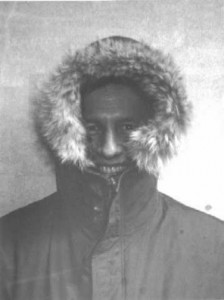
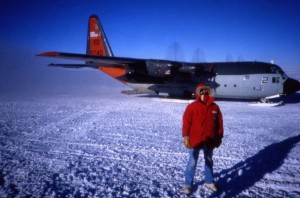
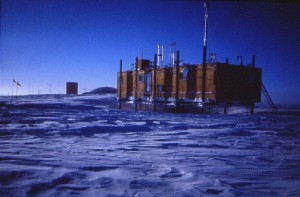
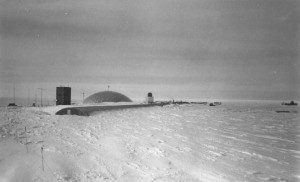

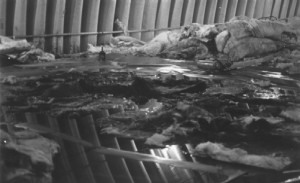
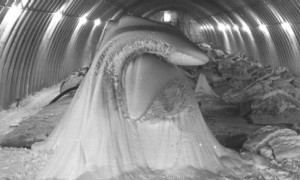
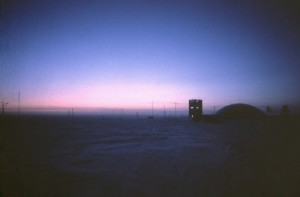
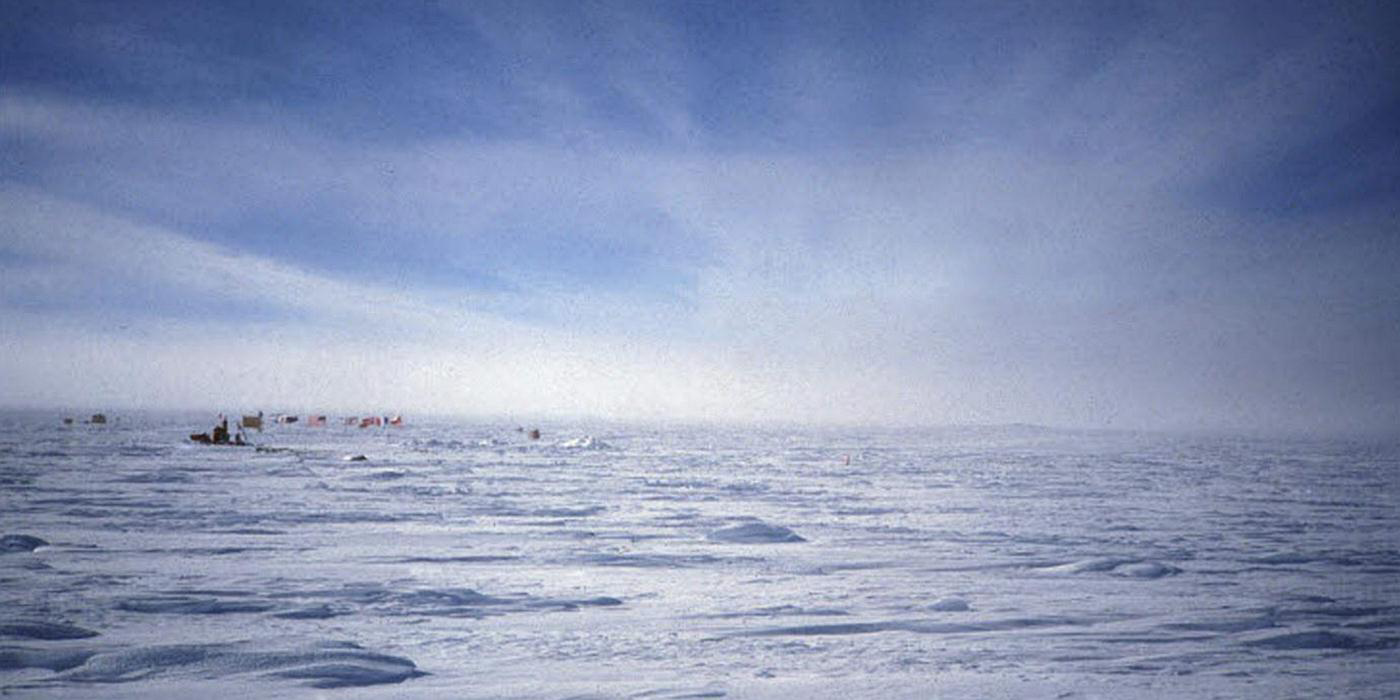
Sorry, comments are closed for this post.